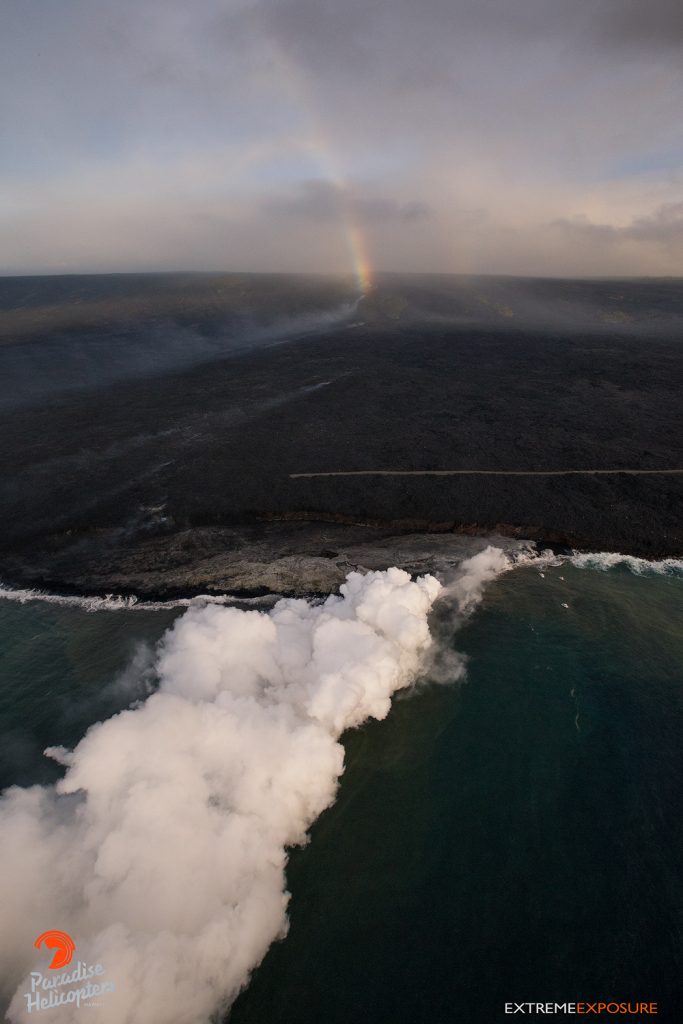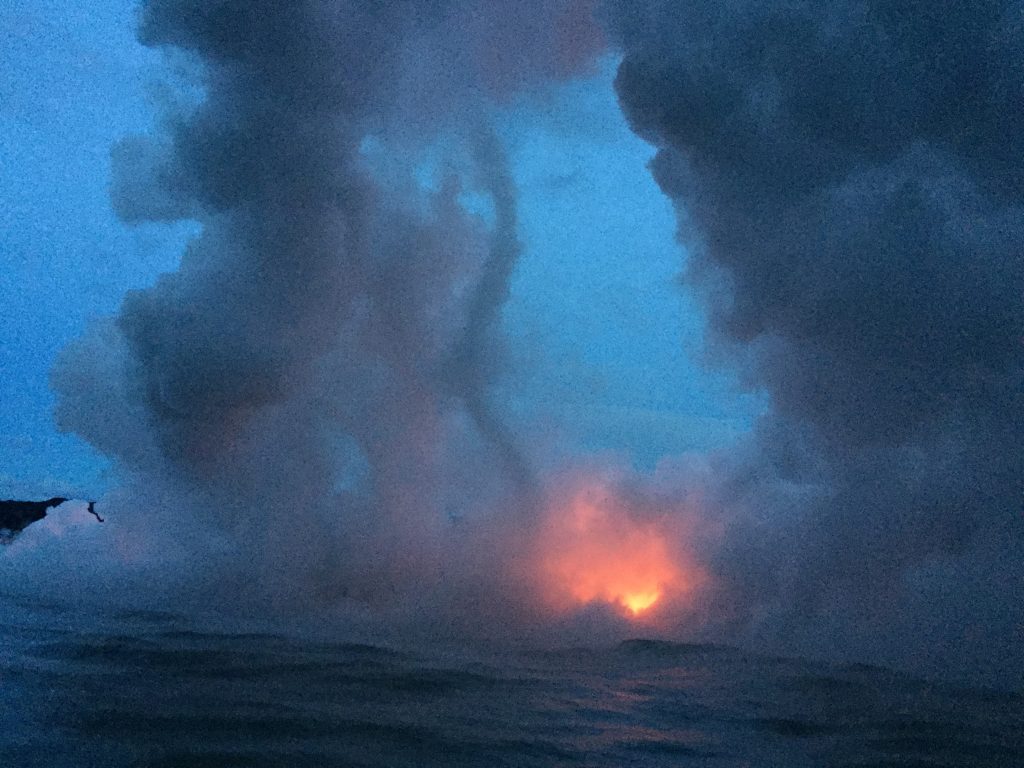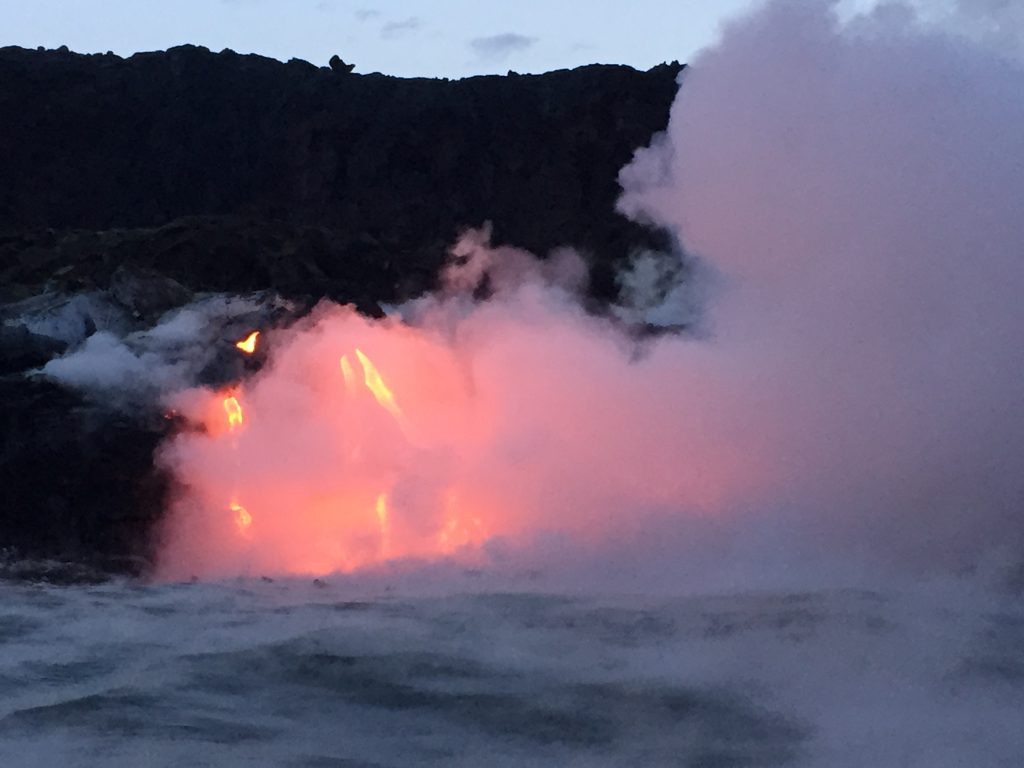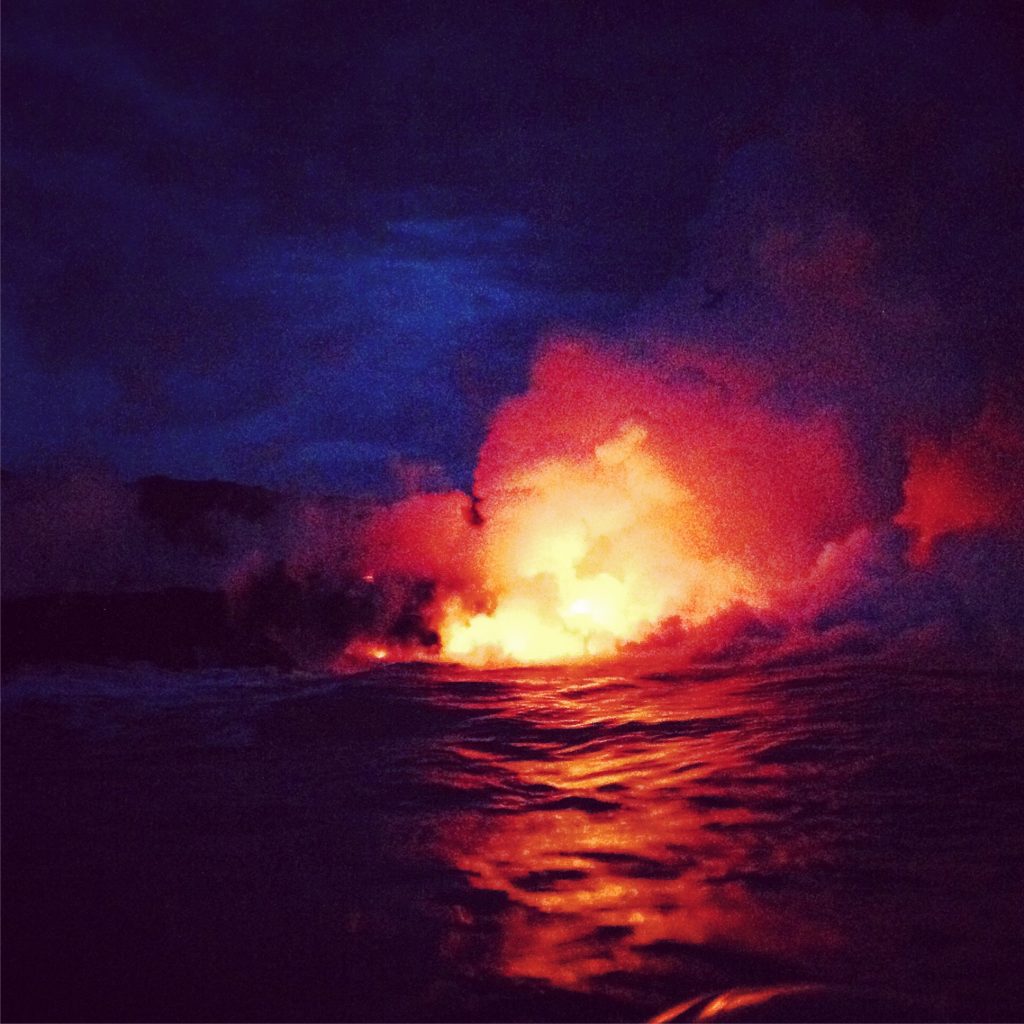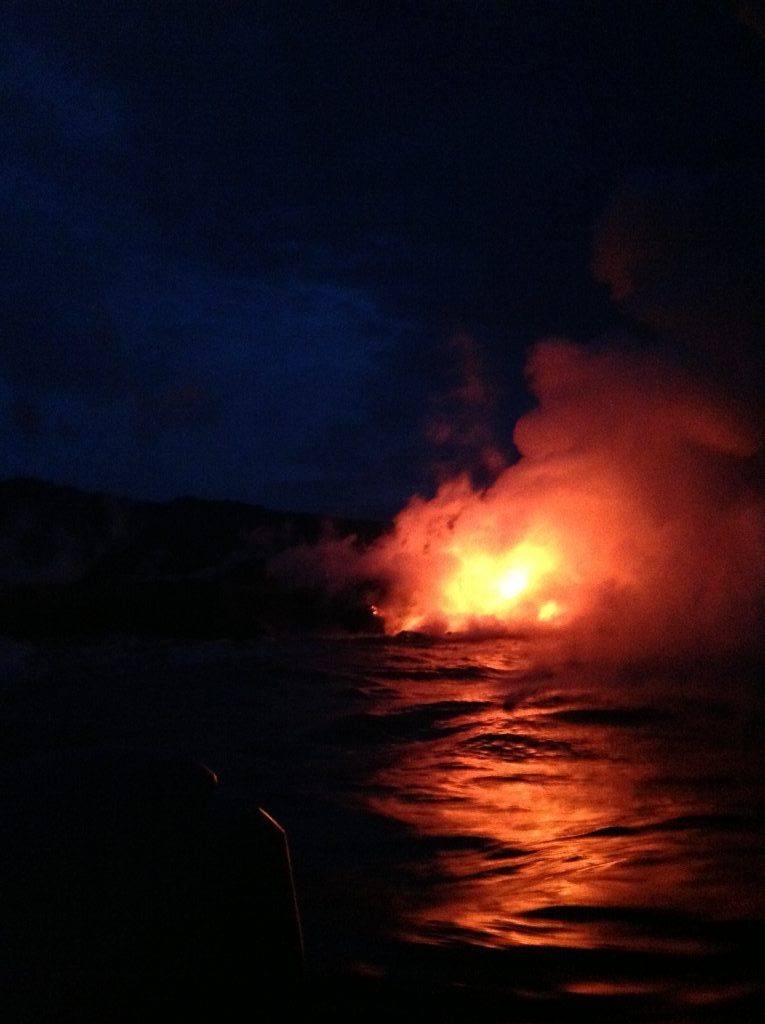Volcano Overflight: Just Days Before Delta Collapse
Video footage was shot by Mick Kalber at 6:30 on Thursday, Dec. 29, 2016.
In spite of the rainy weather, Paradise Helicopters crew members managed to access the Pu‘u ‘Ō‘ō vent on the morning of Dec. 29, 2016, capturing several atmospheric lava lake shots.
They also saw lava flowing quickly through a couple of skylights just east of the vent. This conduit feeds the ongoing 61g flow and the still active additional flow just to the northeast of 61g. Pele still breaks out there
“Pele still breaks out there frequently, but is overplating and widening rather than making much progress downslope,” said Tropical Visions Video photographer/videographer Mick Kalber. “It is now a bit over a mile from the vent.”
The main flow continues unabated, dumping tons of lava into the Pacific Ocean at Kamokuna just inside Hawai‘i Volcanoes National Park, Kalber reported.
Skylights at the base of the Pulama Pali remain, revealing lava as it flows through the tube system from the vent some six miles to the new lava delta (see Delta Collapse Closes Kamokuna Ocean Entry, Dec. 31, 2016).
The flow front is quite broad, active mostly on the eastern side of the enormous lava delta, Kalber reported. The lava delta is well over 20 acres large, even though cracks indicate a collapse may decrease that figure at any time, said Kalber.
Numerous lobes of lava are pouring into the Pacific Ocean there, creating a huge plume of laze that can be seen for many miles.
Video of lava shelf at Kamokuna on Dec. 17, 2016, shot by David Blake, New York, NY. New York, NY.
“We saw three tour boats within 10 yards of the ocean entry, begging the question as to why they are not at risk of a sudden bench collapse as the park claims we are,” Kalber warned. “We are restricted to one-thousand feet from the ocean entry, while the tour boats can go as close as they want and have reportedly even been dropping visitors off on the black sand beach next to the bench.”
The black sand beaches along the coast near the ocean entry continue to form.
The hot lava’s interaction with the cold seawater shatter the flow into bits that are then tumbled into submission.
What a magnificent sight for visitors who can gain access from either the Kalpana of HVNP side by walking out the temporary access road, which goes directly to the ocean entry! The walk is lengthy, however, and precautions should be observed.
Hawai‘i Volcanoes National Park warns visitors that lava deltas are extremely hazardous volcanic features and are formed when lava enters the ocean and builds new land on loose and unstable substrate. In addition to the threat of collapse, lava entering the ocean produces a highly a corrosive plume of hydrochloric acid and volcanic particles that irritate the lungs, skin and eyes.
Visitors are strongly urged to stay out of closed areas and heed all posted warning signs.



